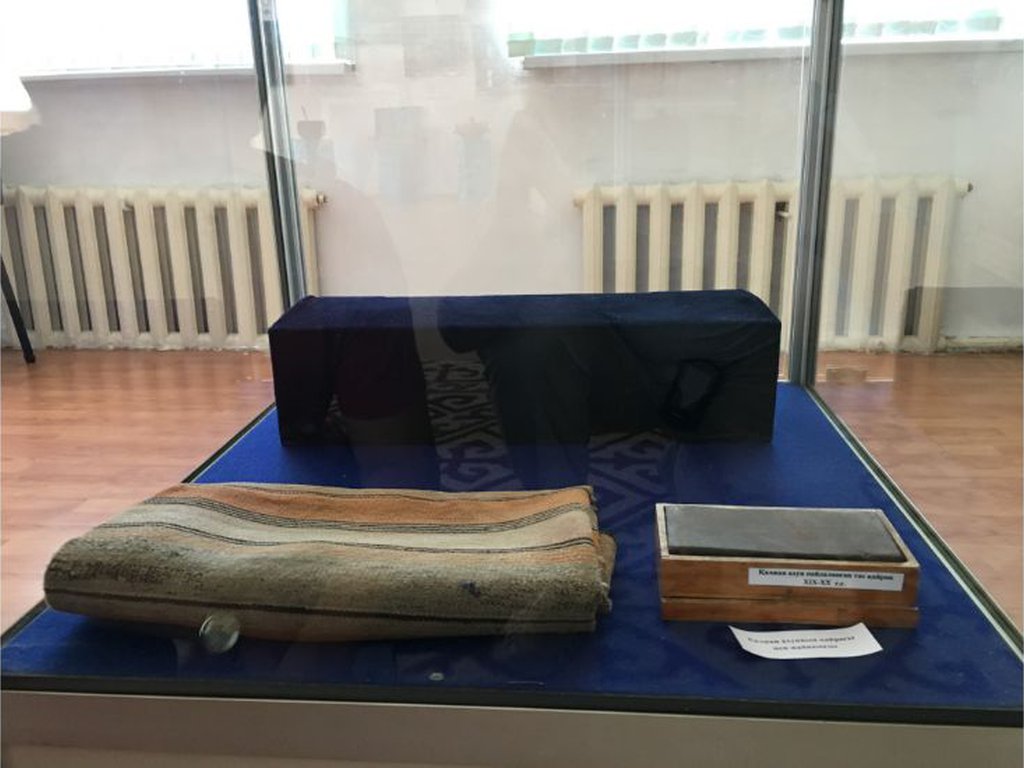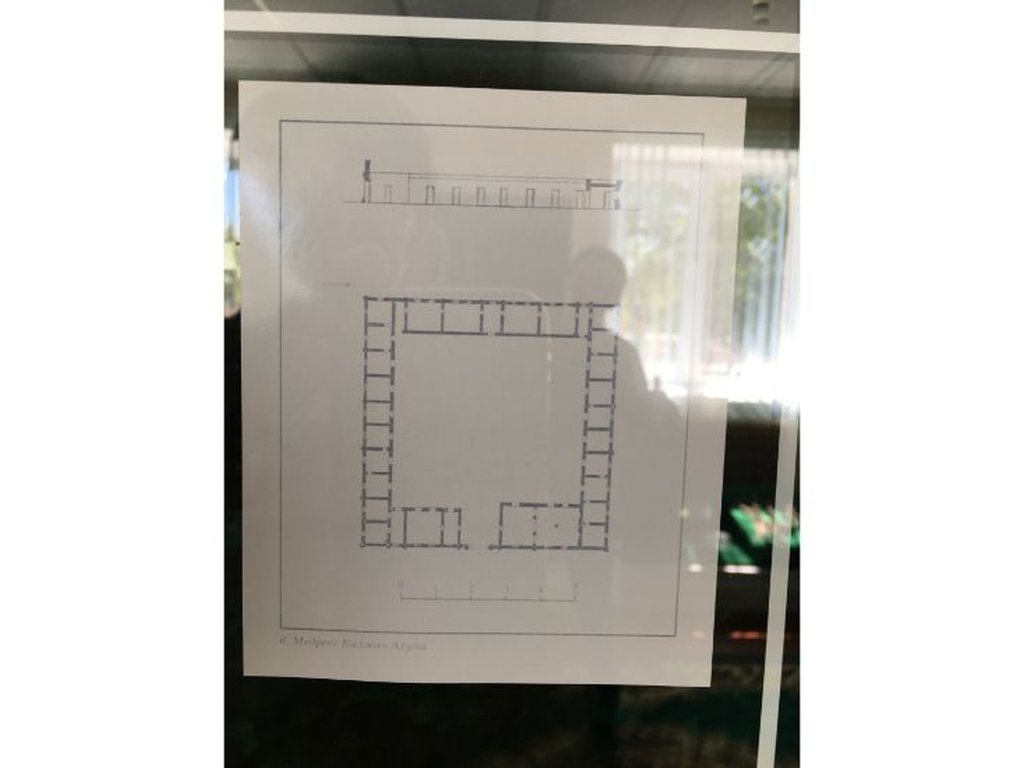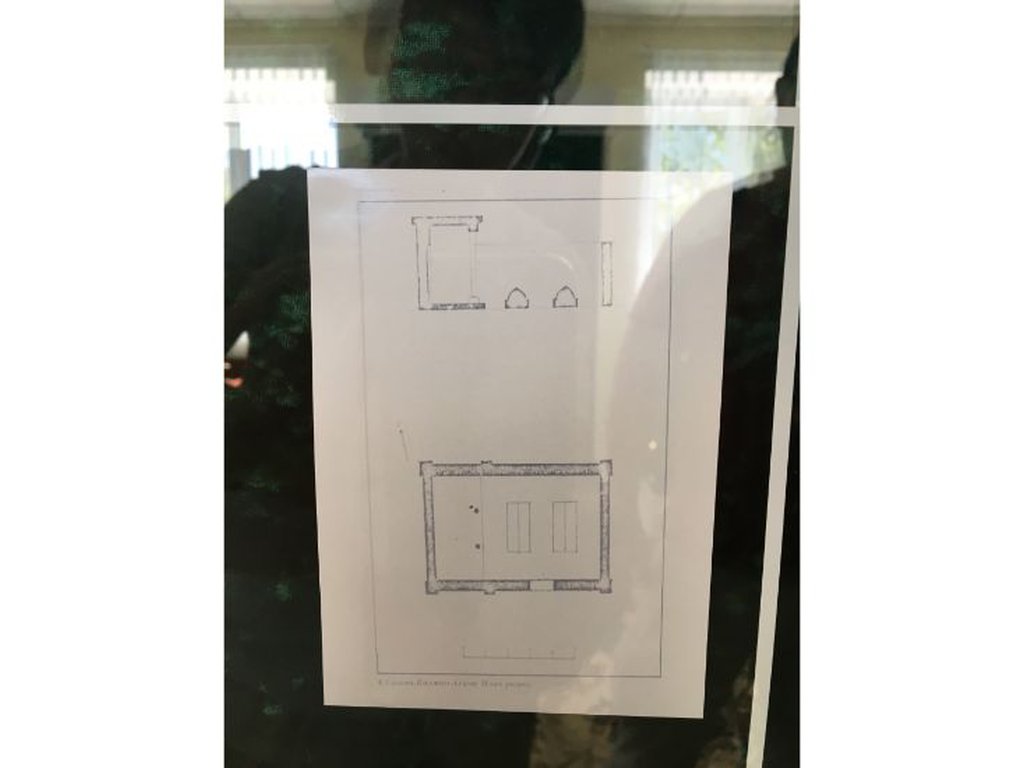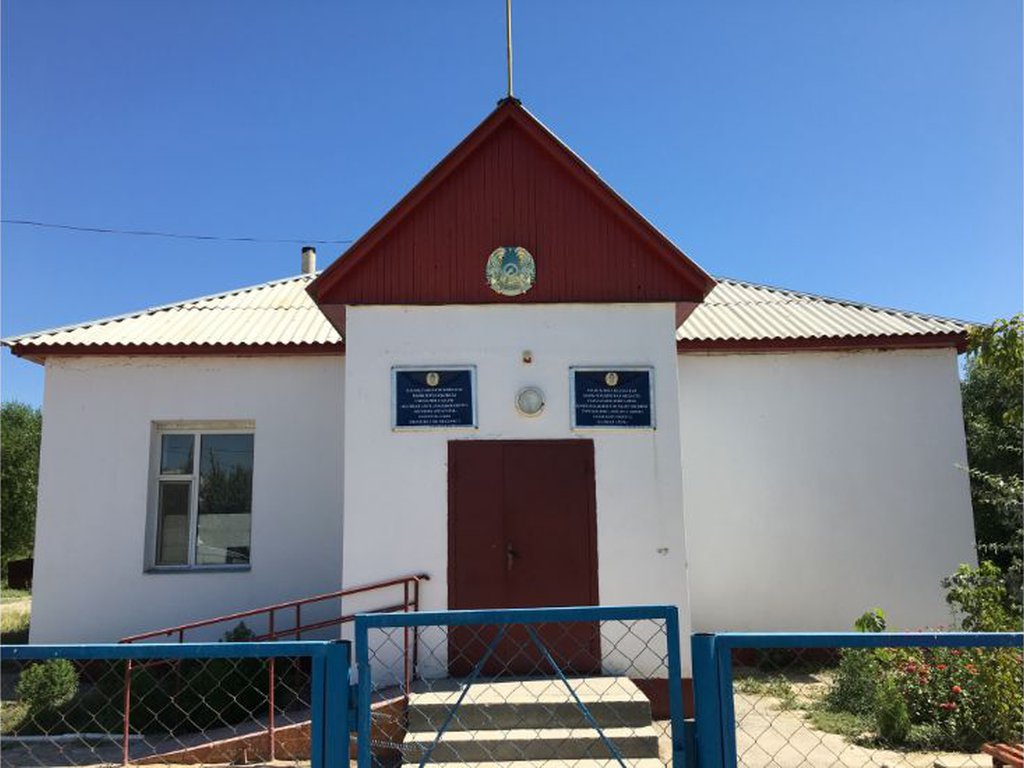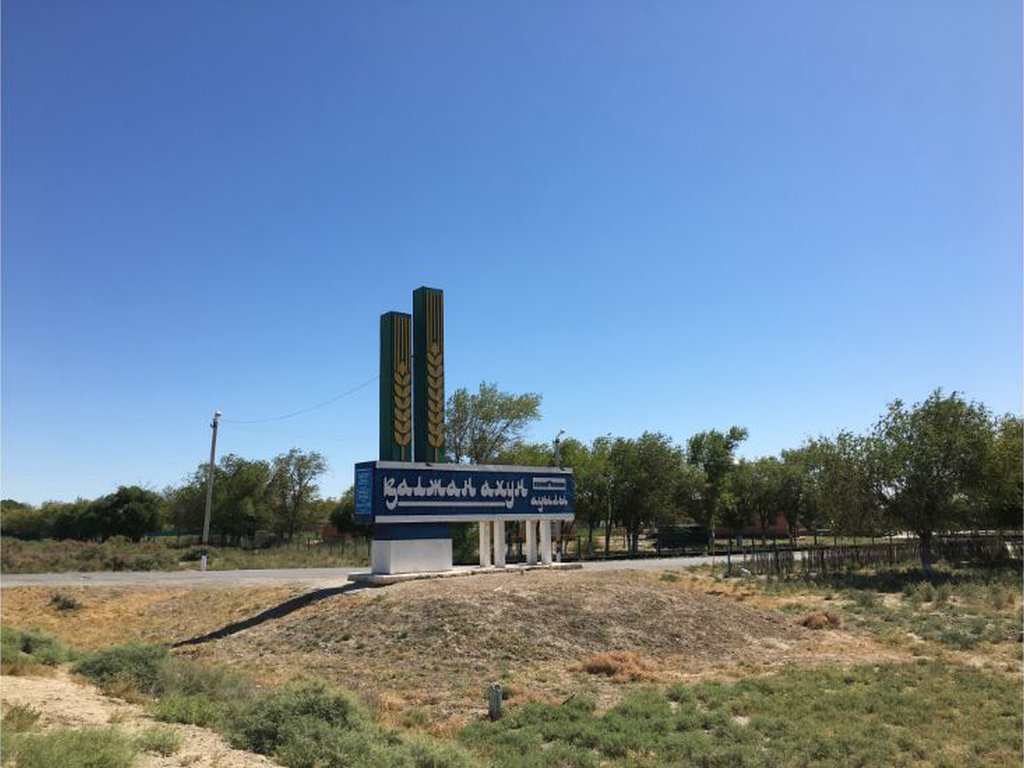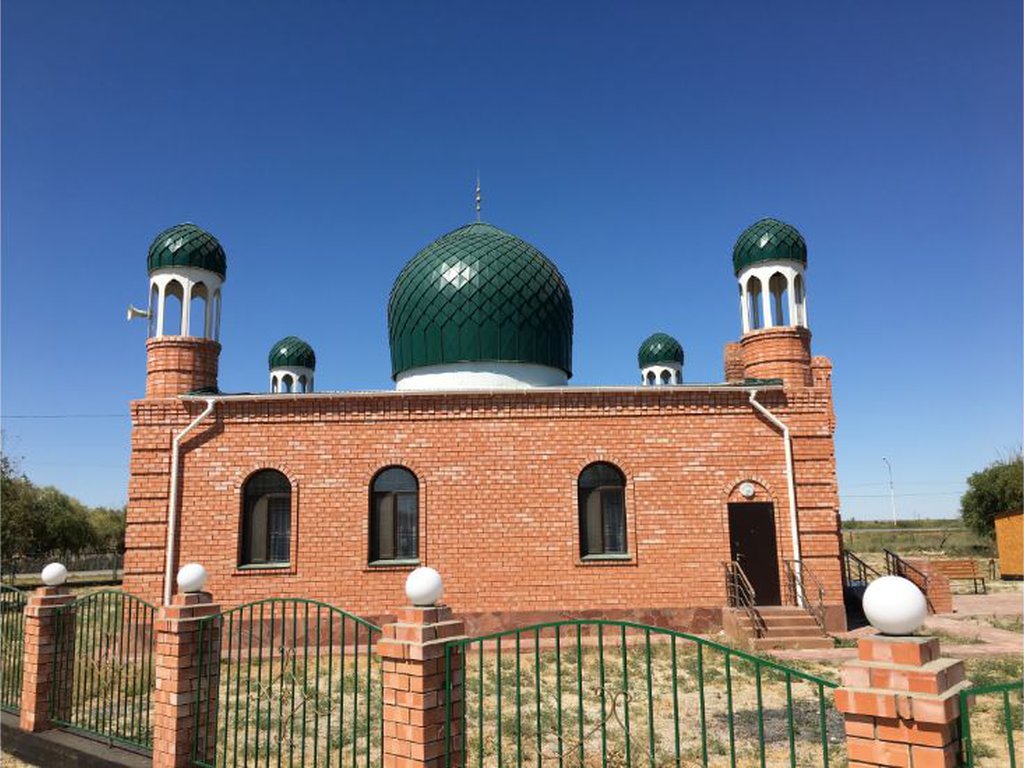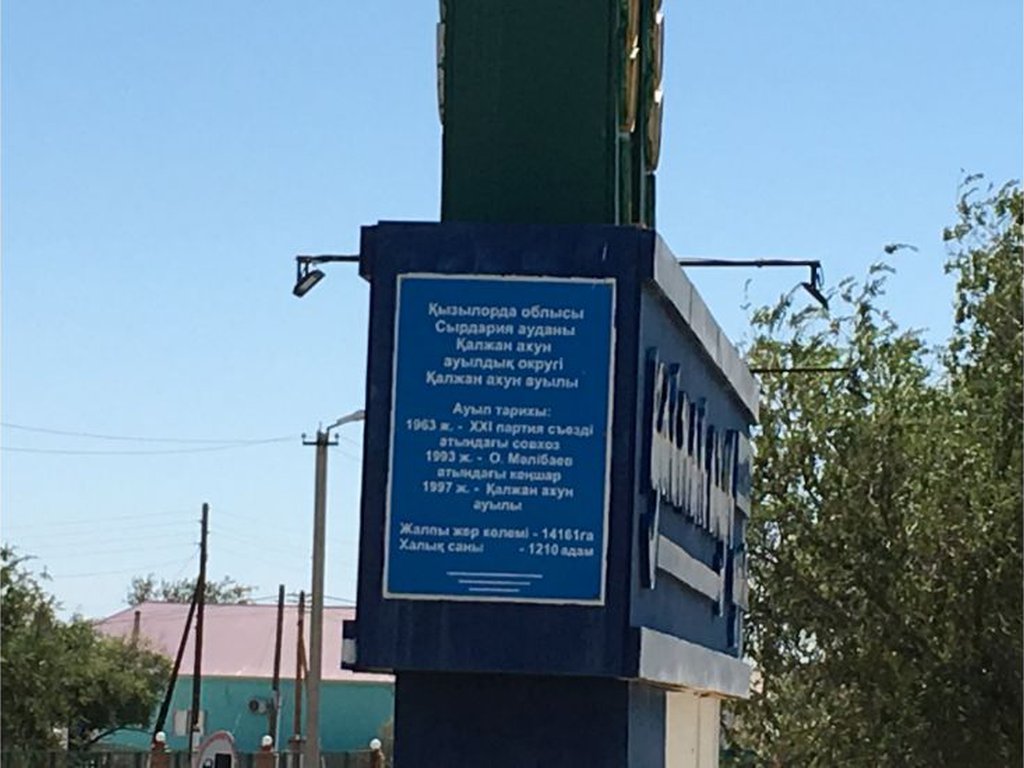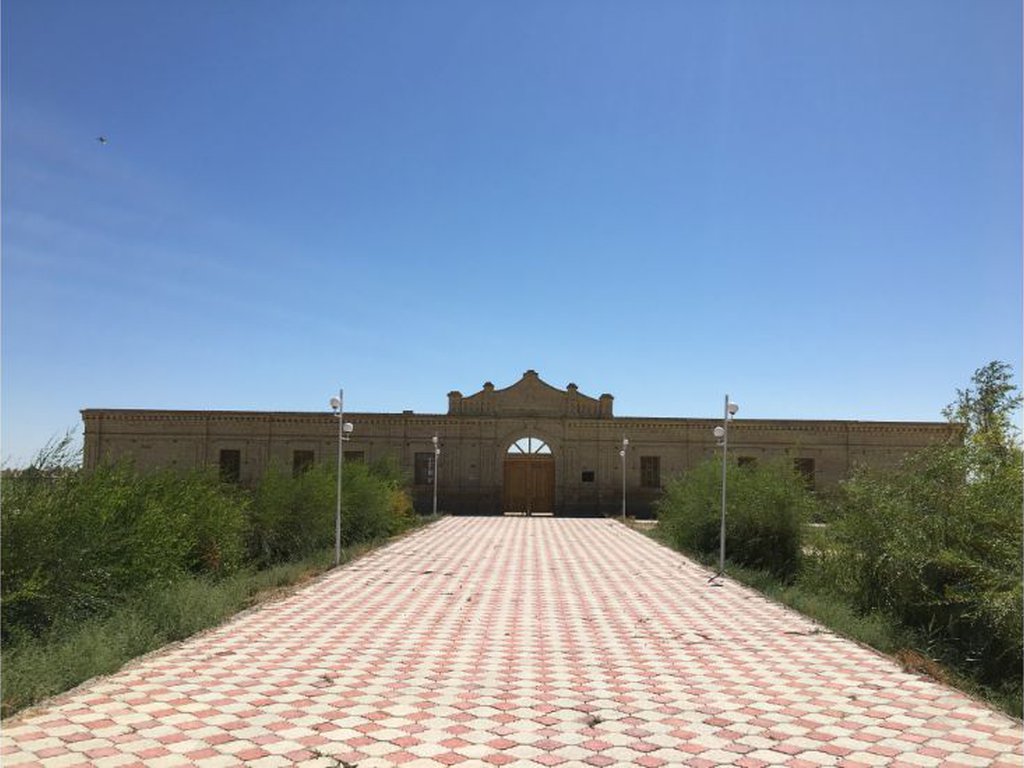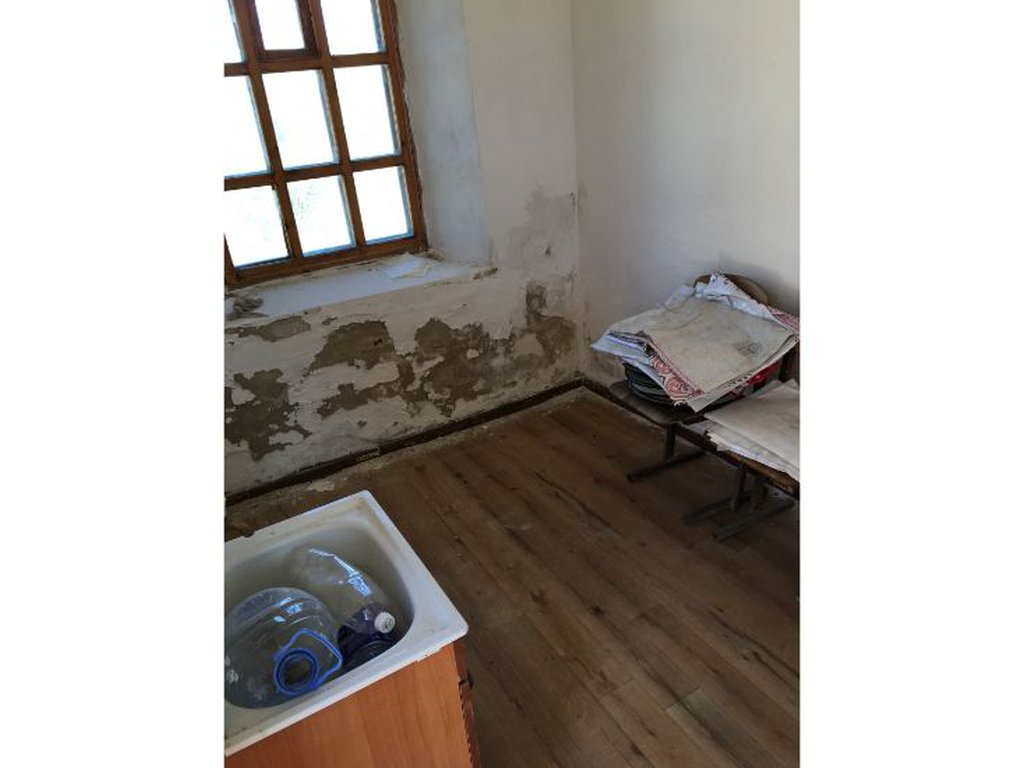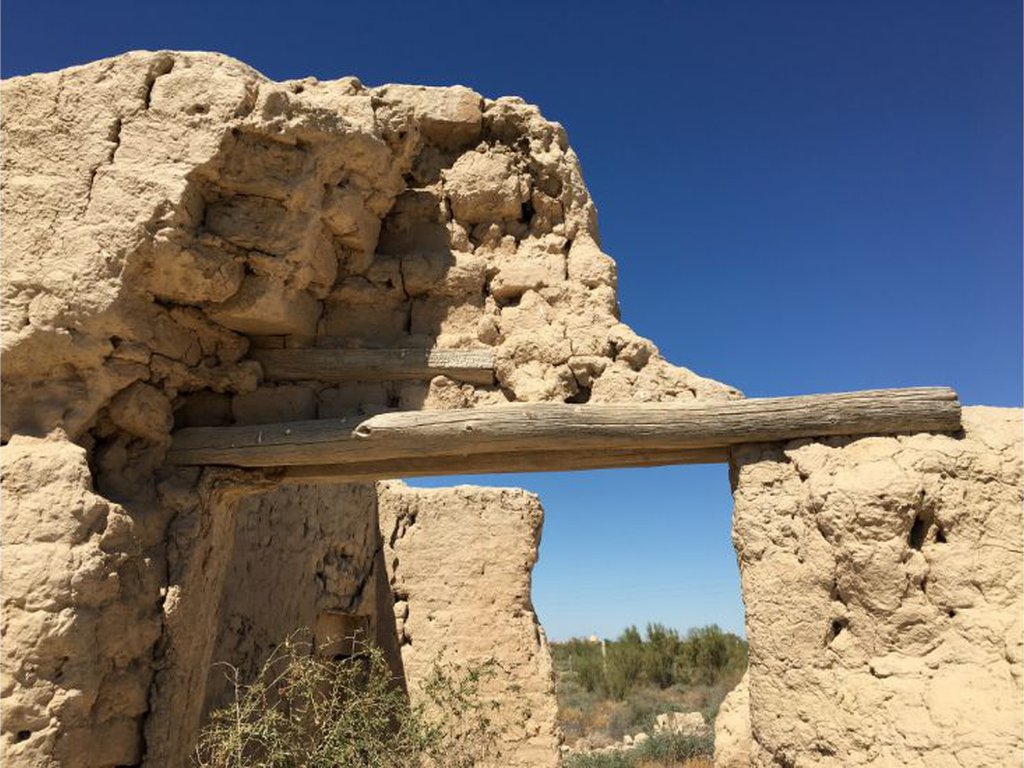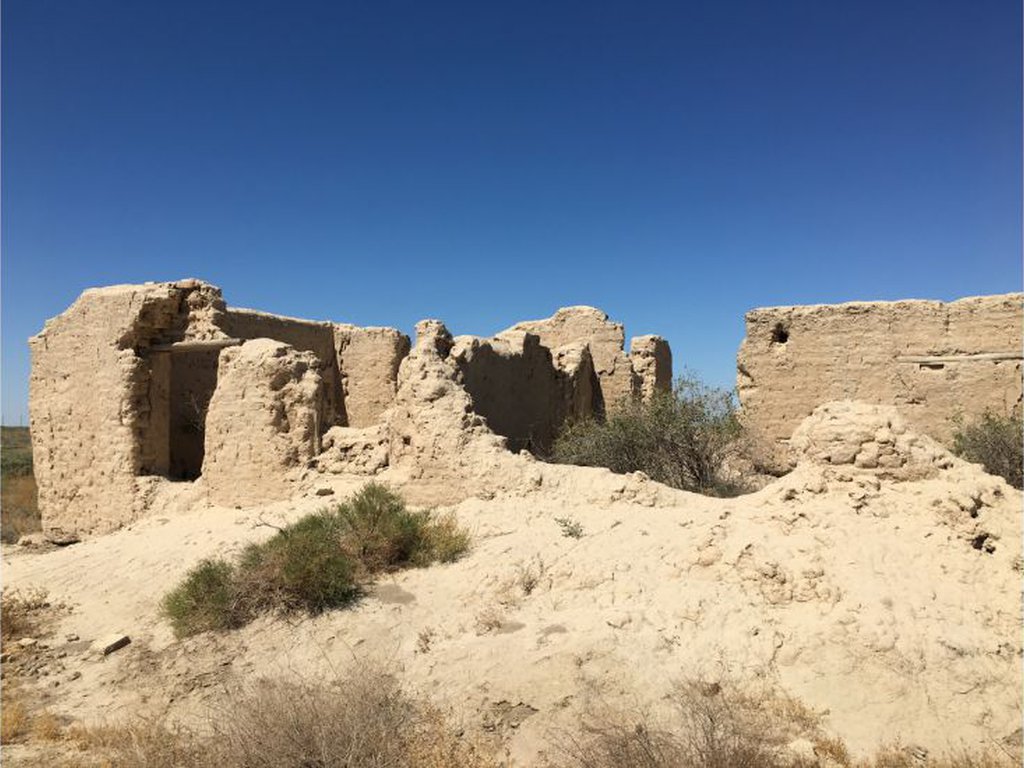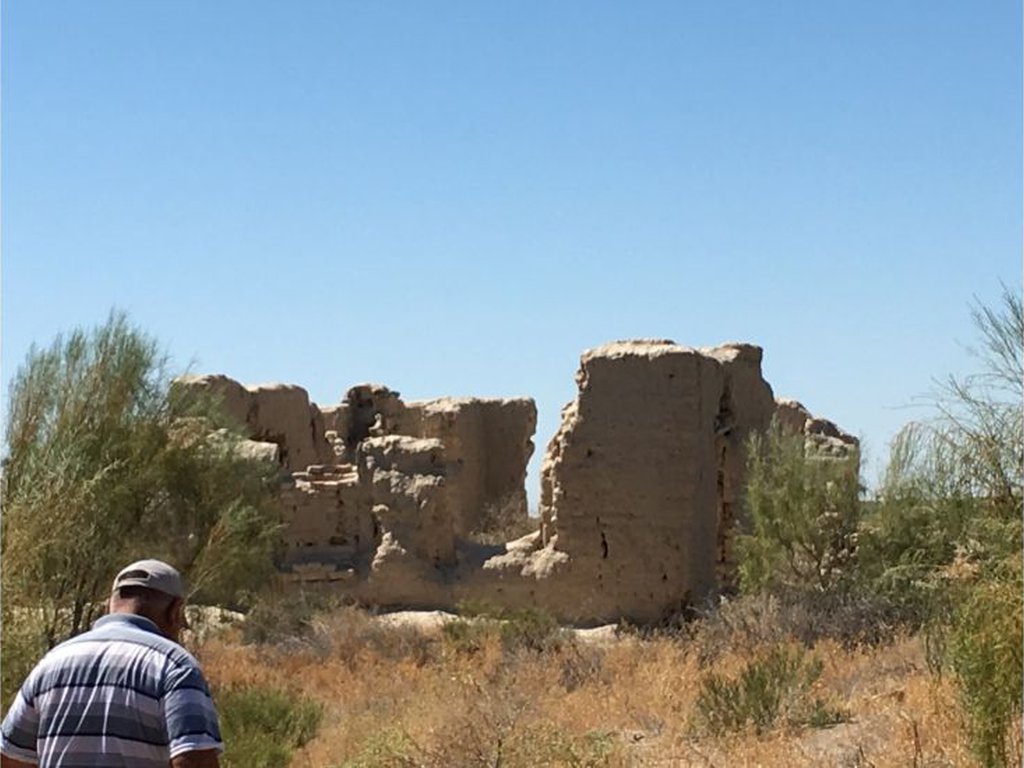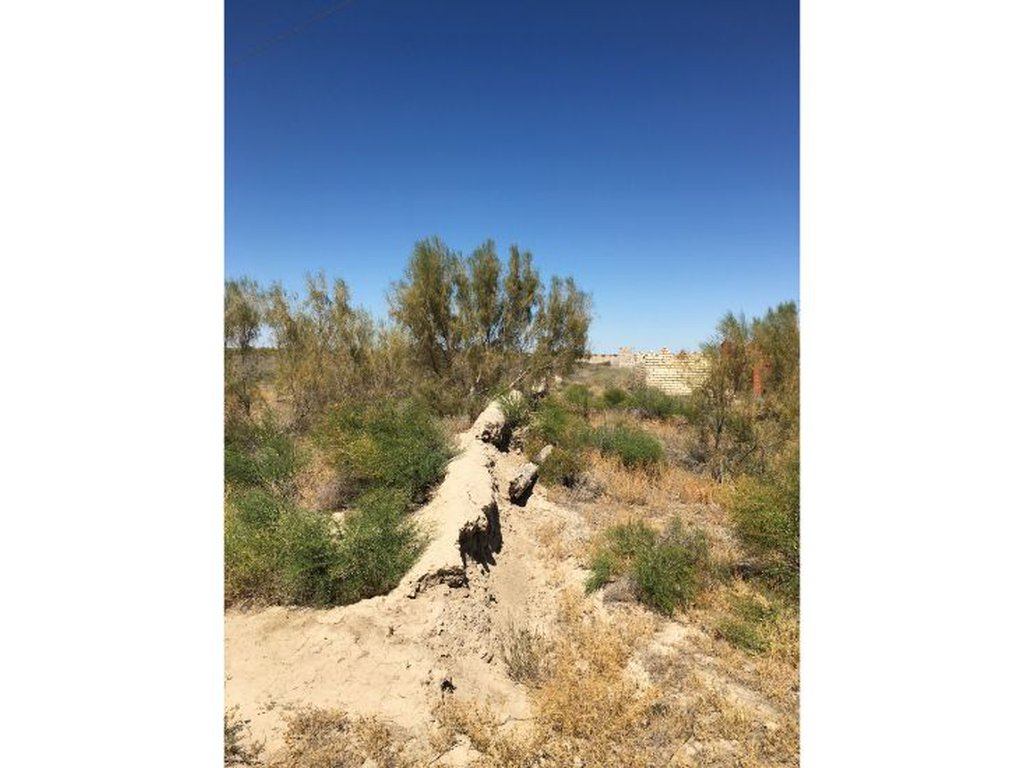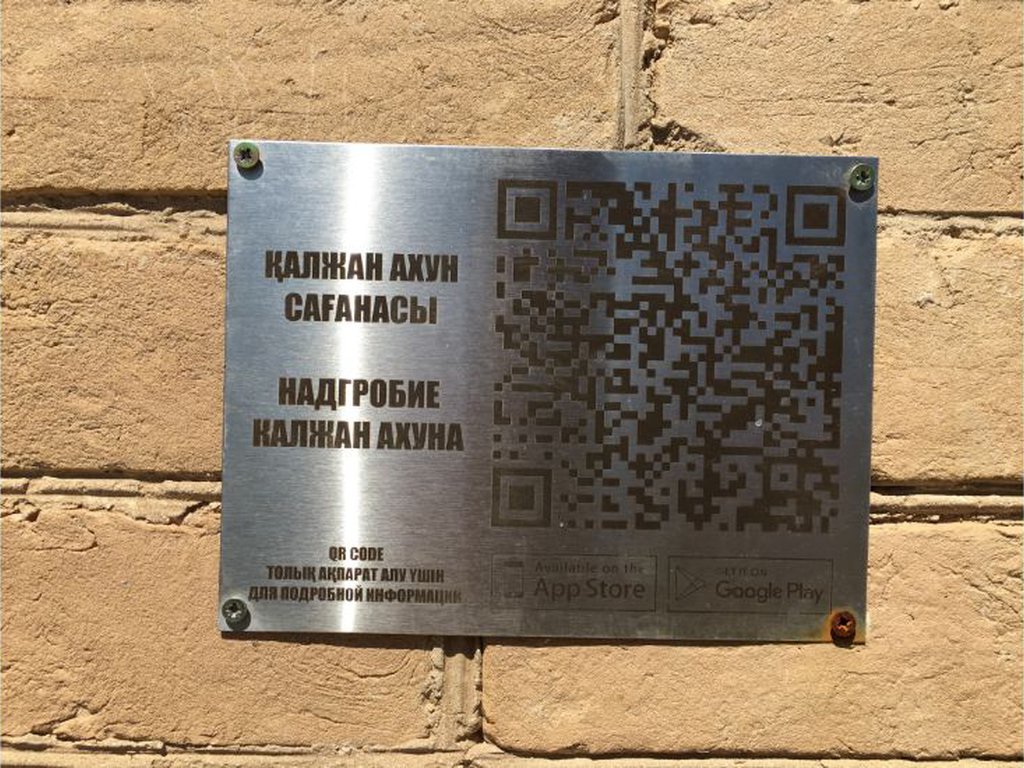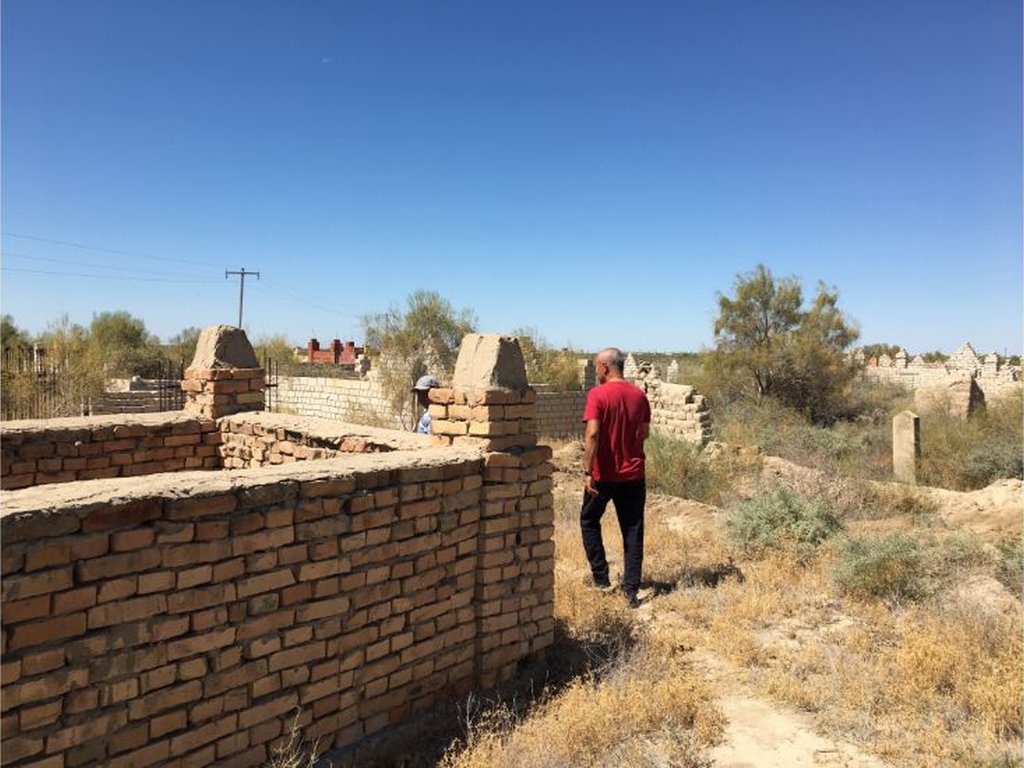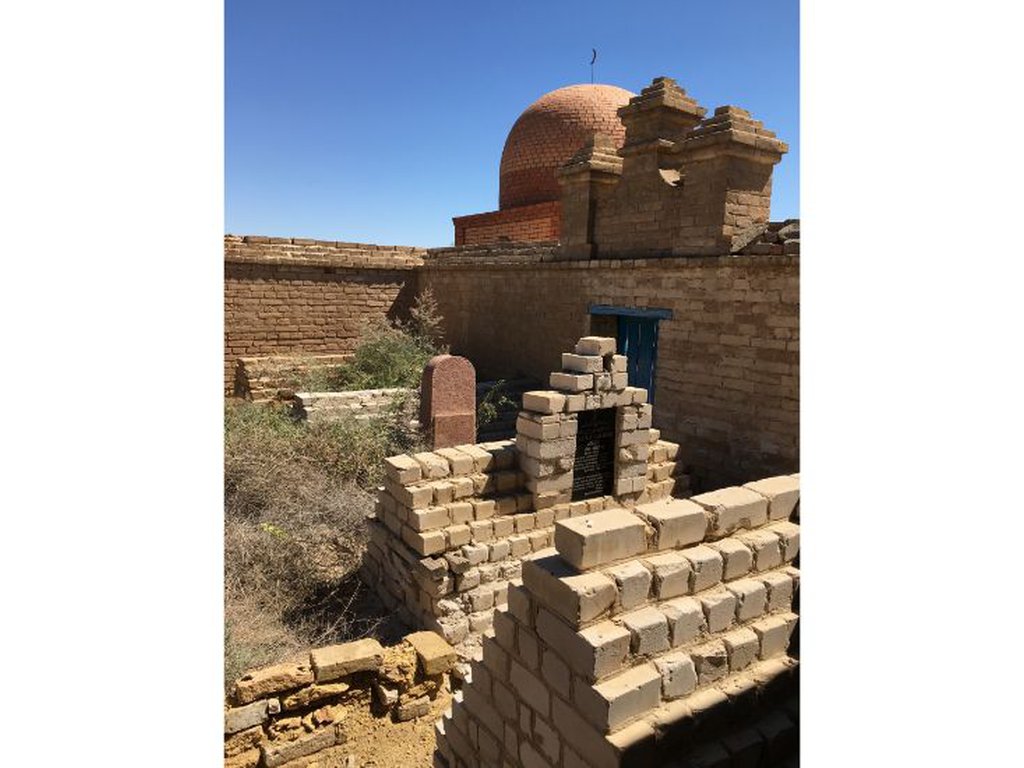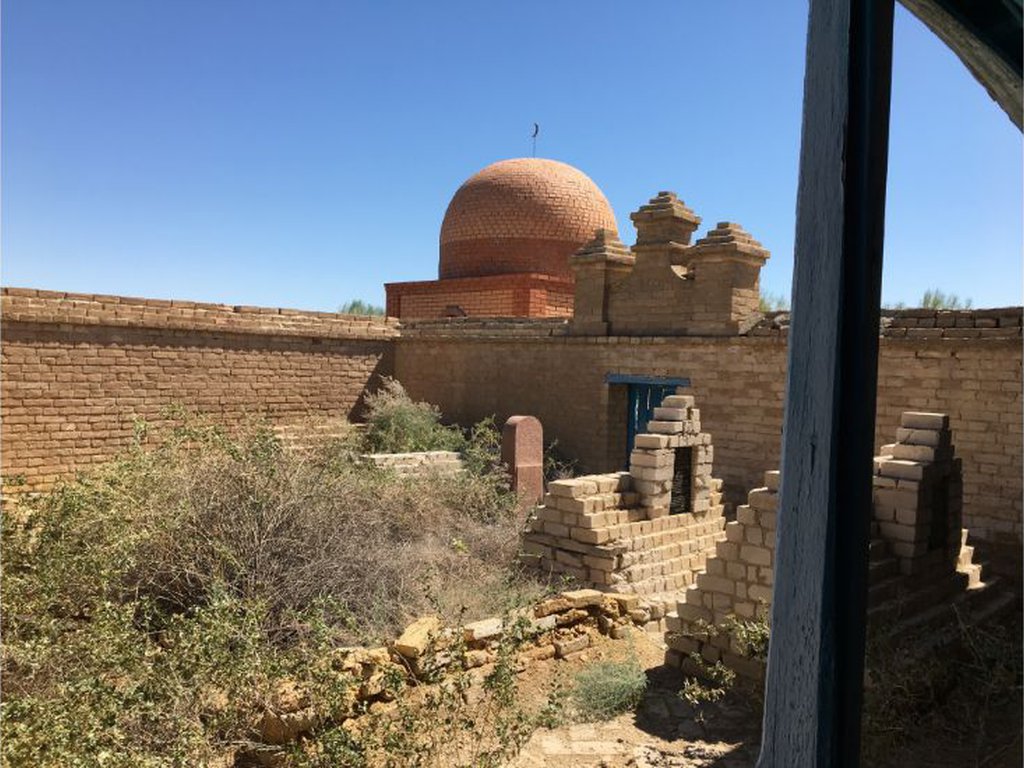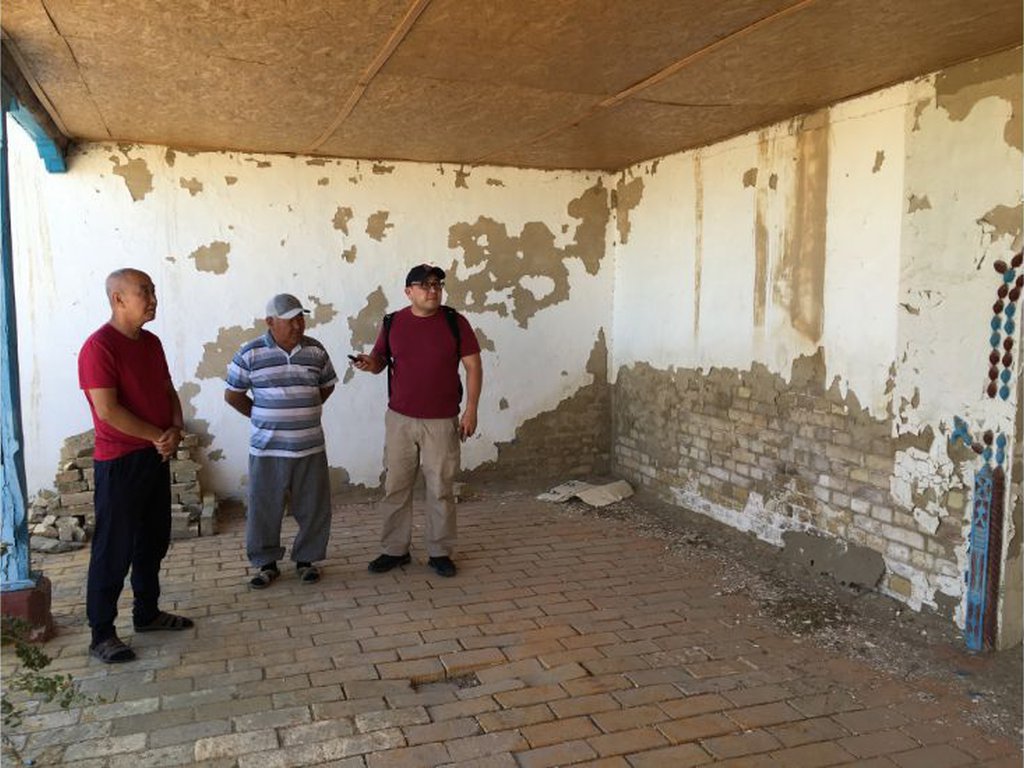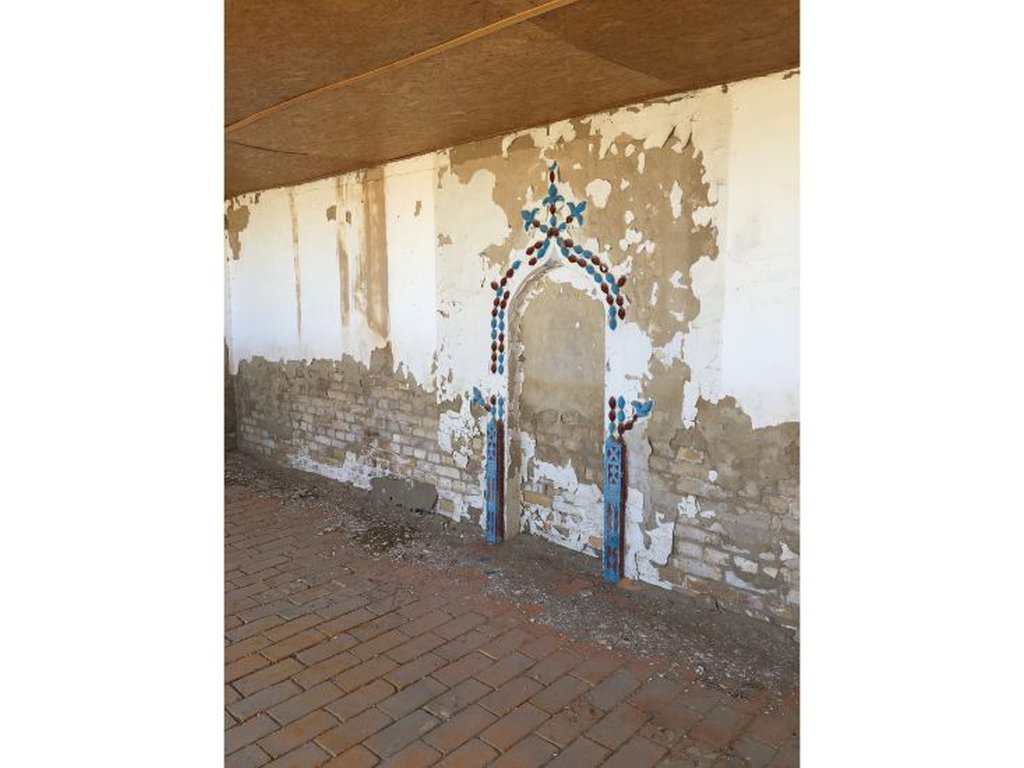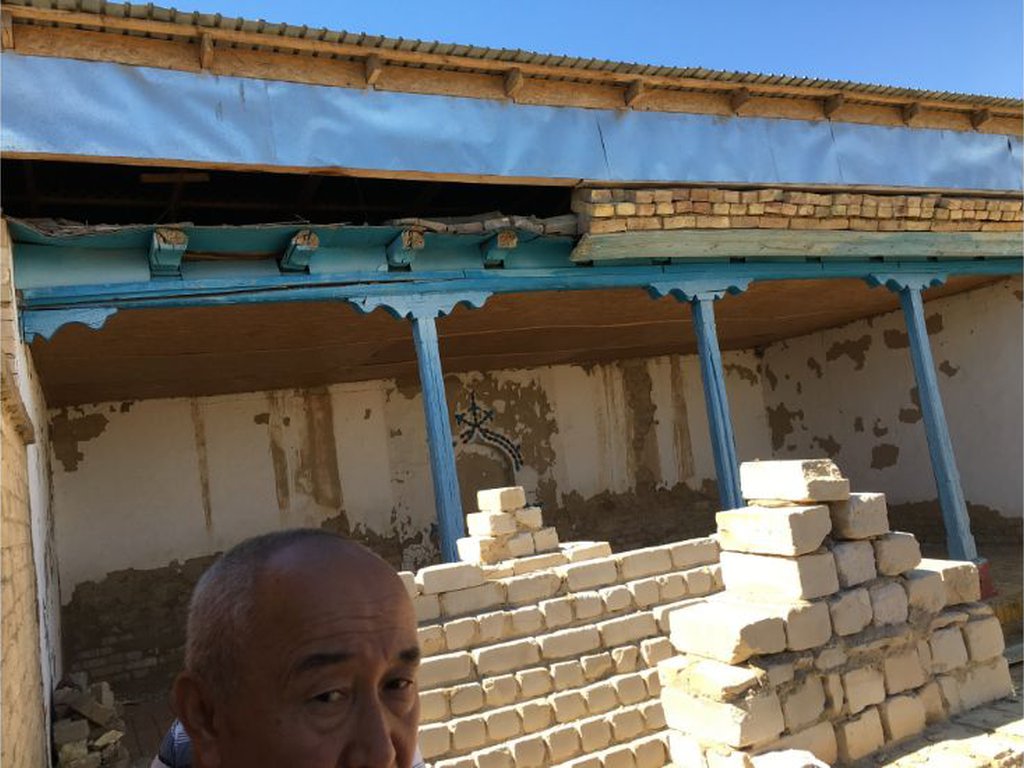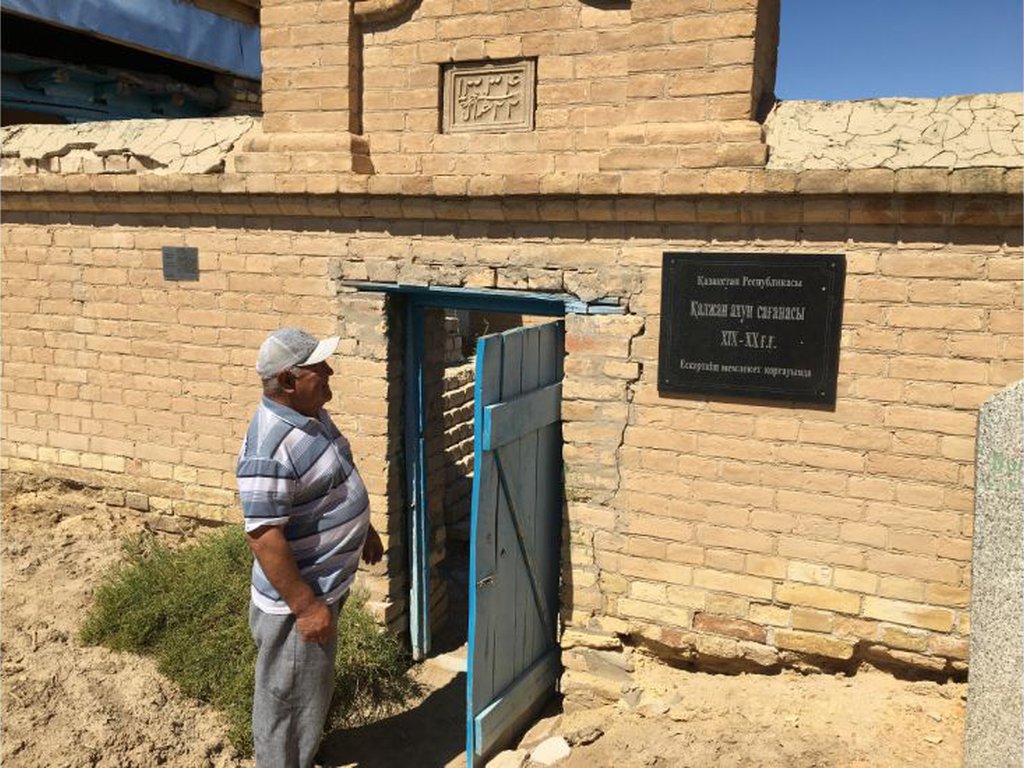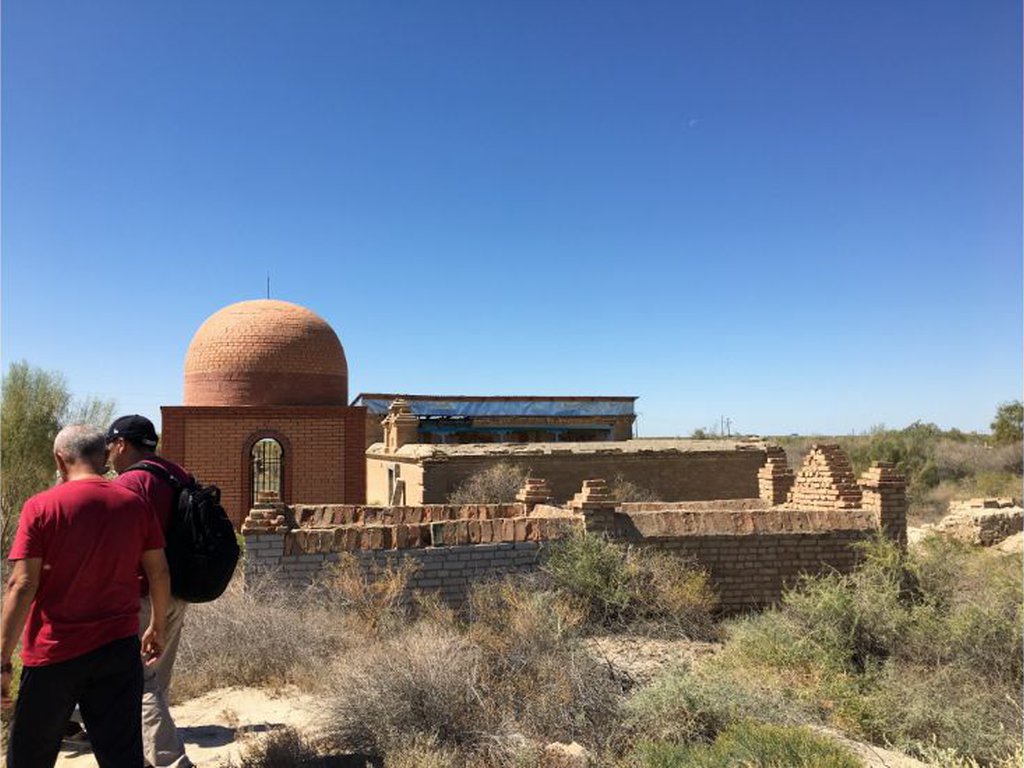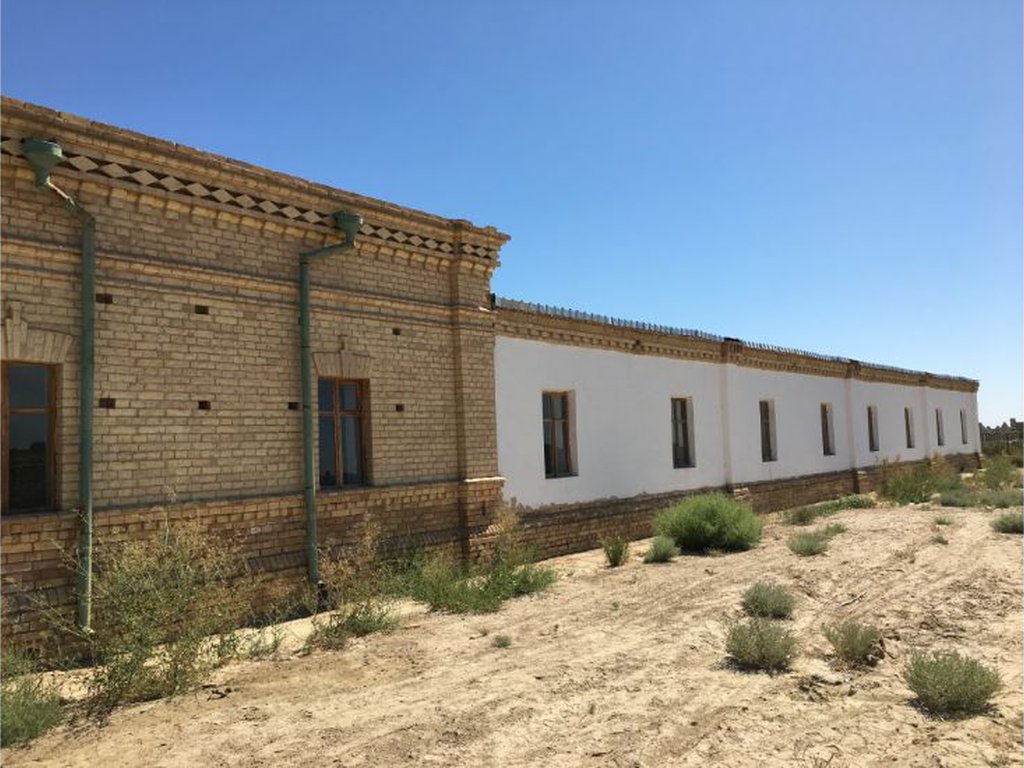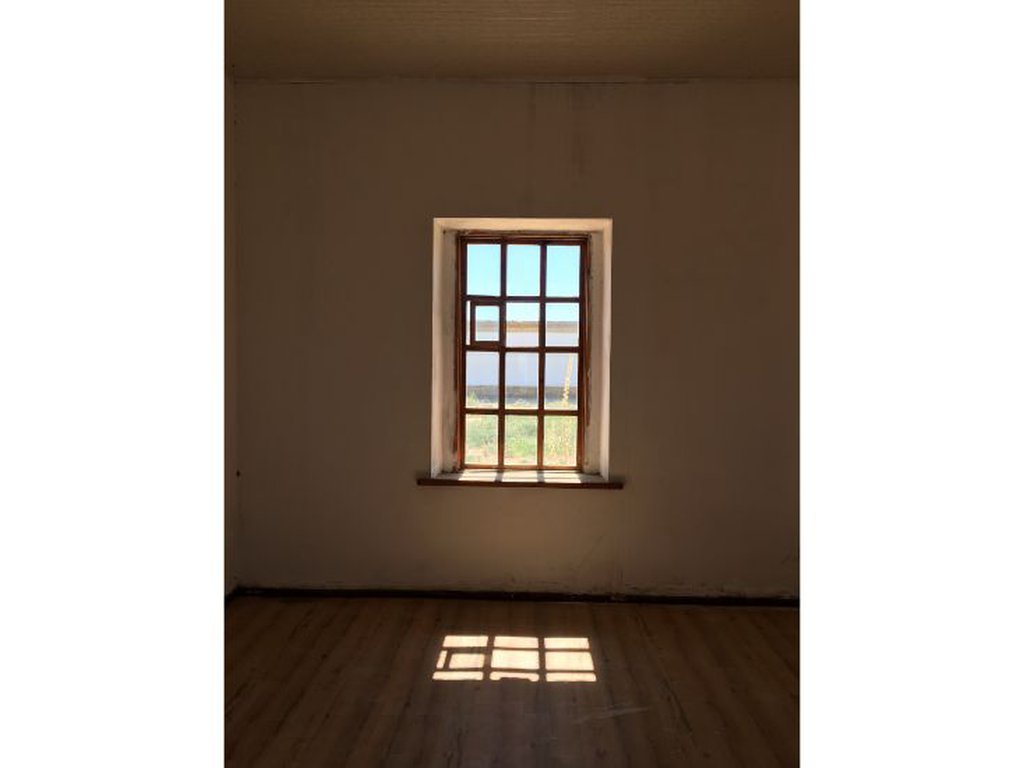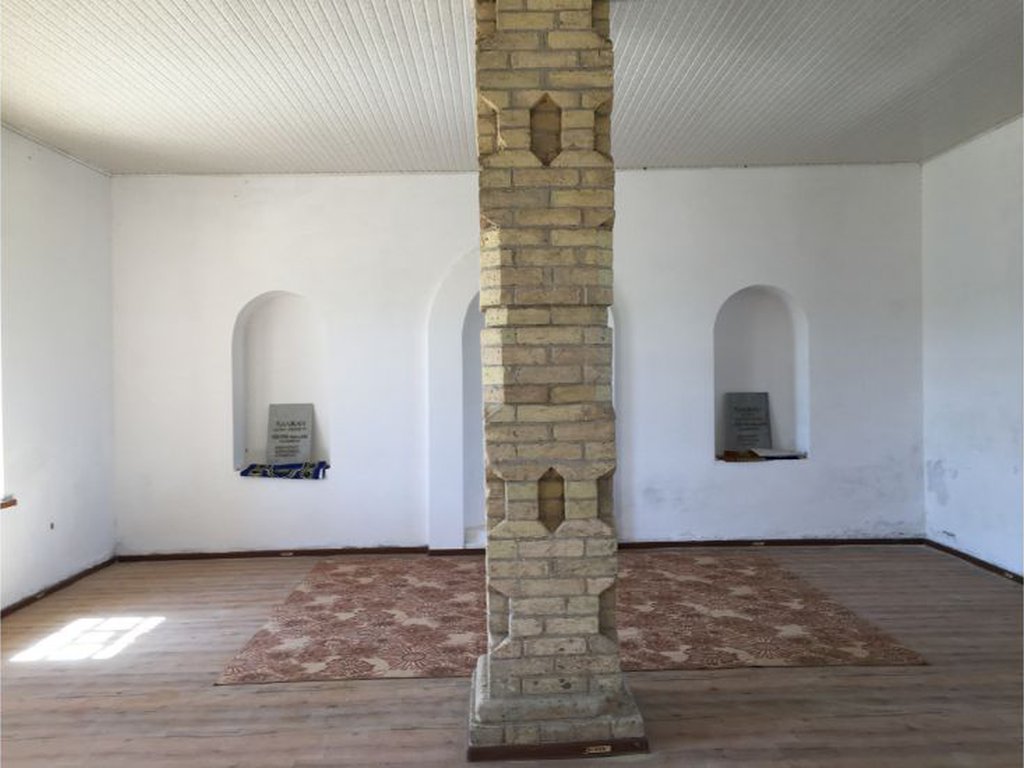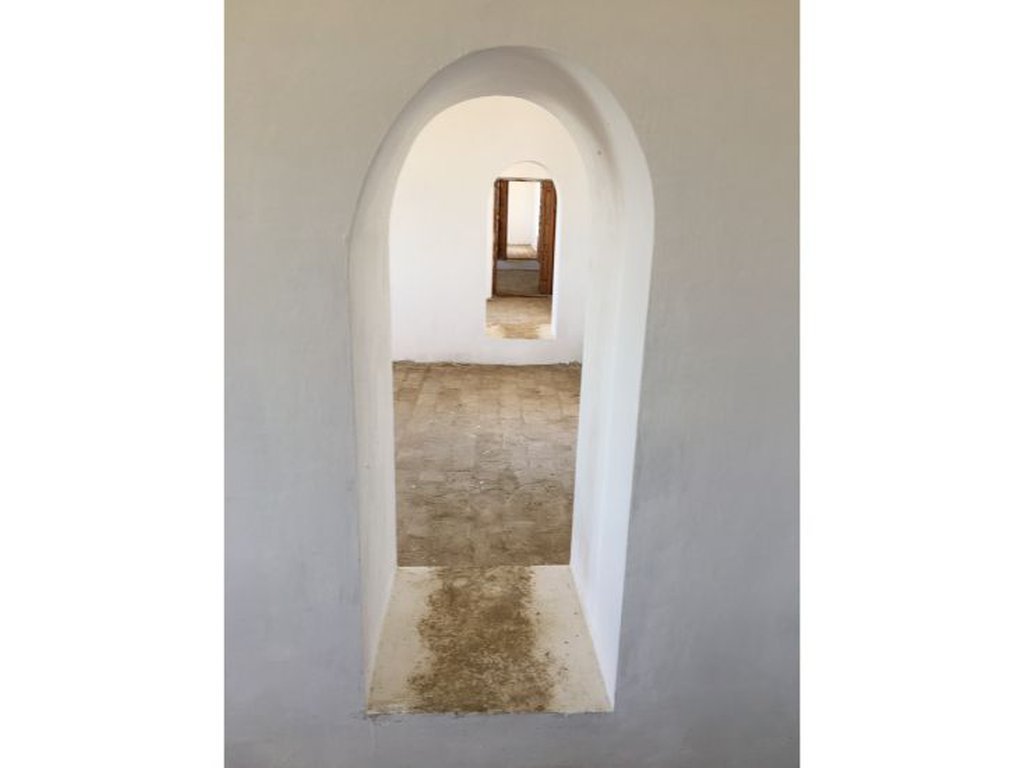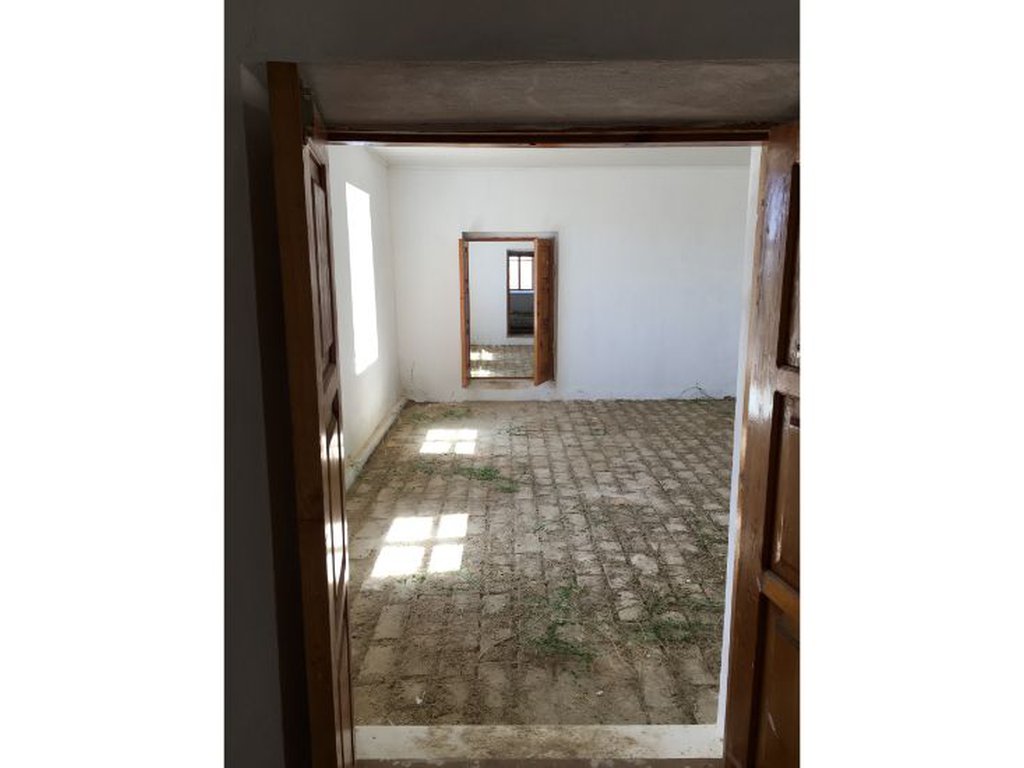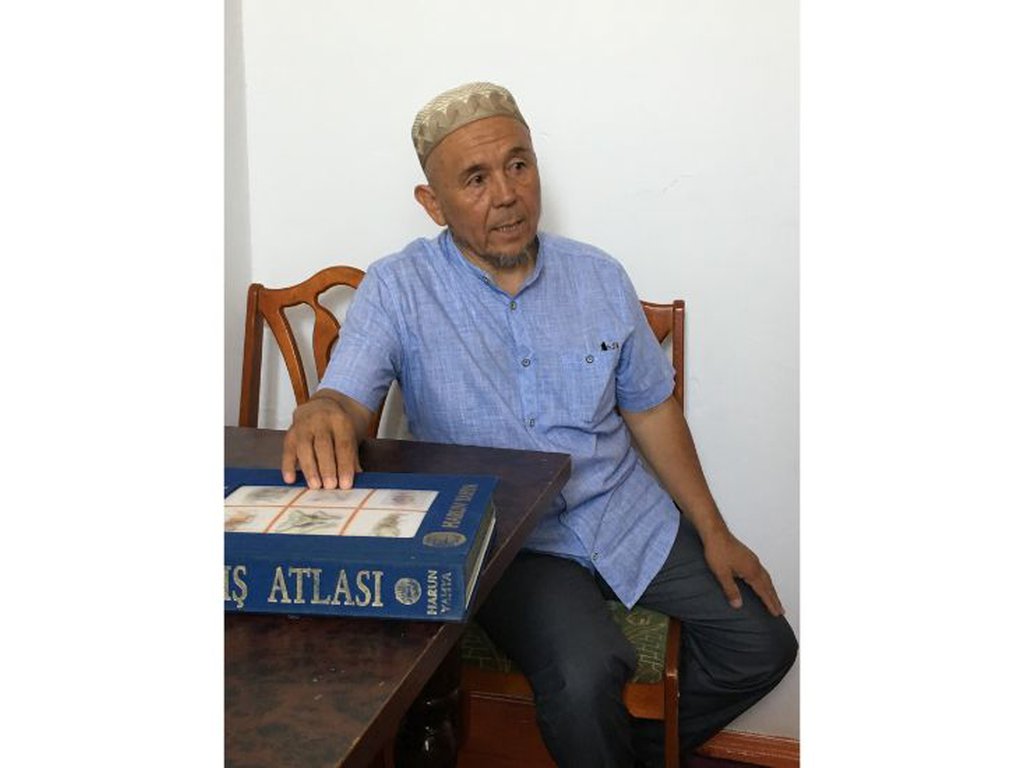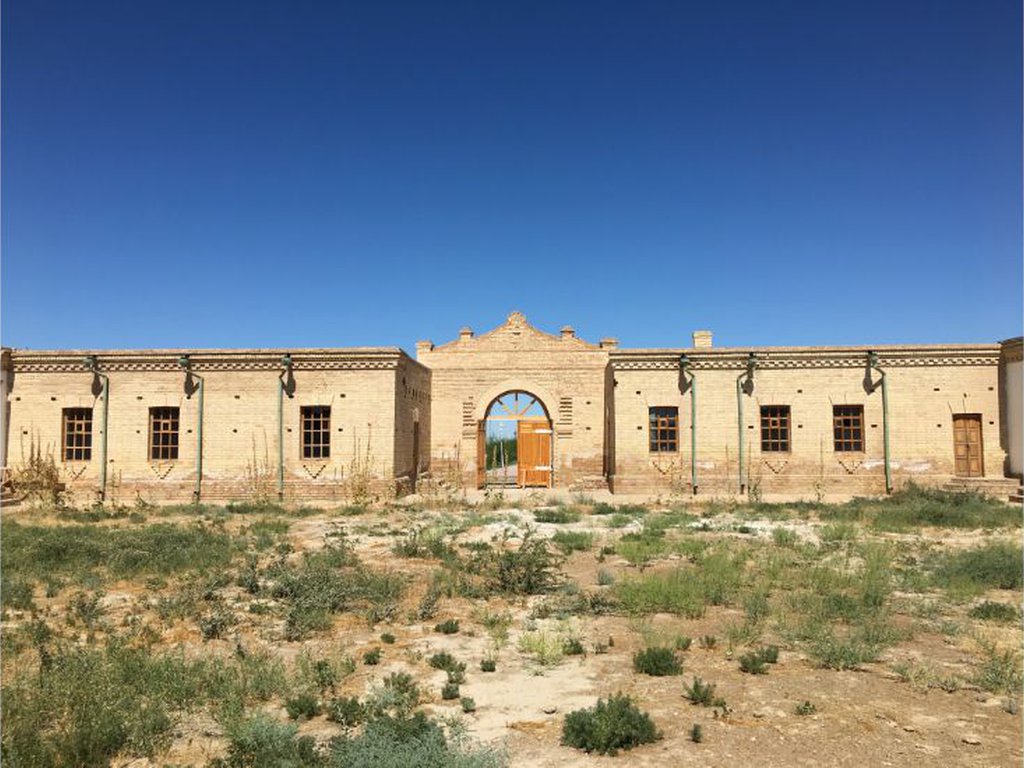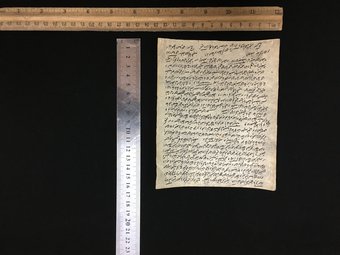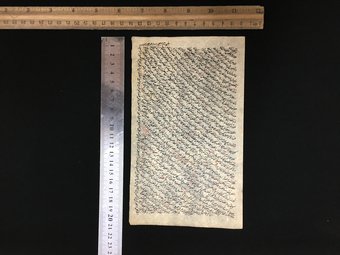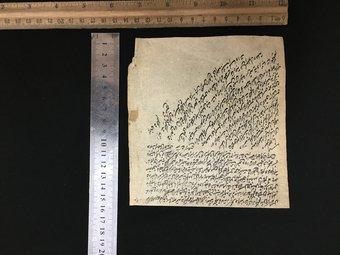Mosque and madrasah of Kalzhan-akhun. Паспорт объекта

Full description
Name: Kalzhan-akhun mosque and madrasah (kaz. Калжан-ахун мешiт медресе)
Site type: Complex of mosque, madrasah and mazar
Founder: Kalzhan Bolekbayuly (Kalmukhamed) -akhun (1862-1916). Kalzhan-Akhun (1862-1916) “... was born in the Khiva Khanate. His father, Bolekbai, was from the Tabyn clan of Zhamankagaly village in the Aktobe region. In his youth, as a guest of relatives in Karakalpakstan, he entered the service at the khan's headquarters, where he held a high post. He was not only a batyr and a leader of the Kazakhs living in those lands, but also a famous healer. He died at the age of 90. Kalzhan, his son, was then thirteen years old. The young man received a good education at that time. After the education in the madrasahs of Khiva and Bukhara at the age of 27, he graduated from the Kokiltash madrasah and received the title of "akhun", which meant that he was one of the speakers (2). In 1890 Kalzhan-akhun came to the lower reaches of the Syr Darya by the invitation of Kete Shomekei Oraz Imam, with whom he studied at the Bukhara madrasah, and remained there for the rest of his life. He engaged in educational activities, opened a mosque, taught children and ordinary sharua to read and write.
Date of foundation: The foundation was laid in 1913 - construction was completed in 1916.
Main center of attraction: Dysfunctional restored buildings that previously housed a mosque and madrasah.
Plan: Buildings of the mosque and madrasah, fenced off with a stone fence, the mazar, the tomb of Kalzhan-Akhun and his family members, the ruins of the Kalzhan-Akhun family's house. The sacred site is a rectangular building with a courtyard. The front building is a sandy brick building with the mosque to the right of the central gate. The remaining rectangular parts of the building of Kalzhan-Akhun mosque and madrassah were divided into rooms where religious classes for students were held. The number of class rooms or hujras is twenty (1). This complex has gone through a complete renovation, especially the external and internal walls, roof and walls of the courtyard. The building, which previously belonged to Kalzhan-akhun and served as a place for receiving guests or, possibly, for conducting classes, has now become a mazar for Kalzhan-akhun and his family members and is located separately from the building of the mosque and madrasah and has not undergone such a deep reconstruction. Not far from this public building there is a former personal residence of Kalzhan, which consisted of a vast garden. The garden served as economic support for madrasah students and was a vakuf property.
The nearest settlement: The site is located 17 kilometers northeast from Kalzhan-akhun village of the Terenozek district of the Kyzylorda region.
Founding circumstances: Kalzhan-Akhun Madrasah was founded in 1906. Later Kalzhan-akhun built a madrasah with his own funds (3). The construction was completed in 1916. Before the construction of the building of the madrasah and the mosque, Kalzhan-akhun had already conducted his proselytizing and educational activities in these places (4), which was concentrated around the preserved premises, which now are the family burial place of Kalzhan-akhun and his family members. Near the madrasah there was also the residence of the saint, which consisted of an adobe house and a fenced yard with a garden and farm.
Period of use: The buildings of the mosque and madrasah were used for a short period from 1916 until their closure, which apparently happened during the peak of the anti-religious struggle in the USSR in the 1930s. It is only known that after 1937 the building of the madrasah was used as a temporary detention camp for deported Koreans from the Far East. Even earlier, according to the descendant of Kalzhan-akhun Hasanatulla, the building was used as a poultry farm and a cattle yard. Since 1944, a secondary school has functioned in the building of the madrasah. According to local residents, the building was abandoned in the late Soviet period. The building has undergone gradual restoration since the early 2000s. The last renovation work took place in 2017-2018. The surviving fragments of the walls were reconstructed. The building is currently empty and has no permanent staff.
Main functions: From the moment of its foundation, the building functioned as a mosque and madrasah, where the children of local residents studied by the standard program of religious Islamic education (up to 100 students). According to ethnographic information, the madrasah curriculum included disciplines such as geography, mathematics, etc., which may indicate that the school belonged to the new method (Jadid) tradition (4). It is also known that the nearby private prayer room of Kalzhan-akhun also served as a place of study for some of his students. According to data from the descendant of Kalzhan-akhun Hasanatulla, this room housed the personal library of the akhun, which was relocated to Leningrad in the 1960s. Akhun and his family lived in the residence, which was also located near the madrasah. The area around the residence was probably the vakuf land of the mosque and was used for economic purposes to supply the school.
According to personal records of Kalzhan-akhun, which were published by Yasavi University in Turkestan, Kalzhan-akhun was actively involved in religious activities and regulated ceremonies and rituals. For example, in one of the notes made in Arabic (without specifying the year), Kalzhan determined the amount of sadaka (Muslim alms) for the period of the month of Ramadan. According to this record, the monetary size of sadaqa had to correspond to 1460 grams of grain, or 2690 grams of oats, persimmons or raisins (5). This document shows the internal aspects of Islamization, common practices and rituals. In addition, Kalzhan-akhun corresponded with other Muslim theologians about the rules of Arabic grammar and syntax, aspects of Muslim fiqh, etc. (6)
Religious affiliation: Sunni Islam, Hanafi madhhab
Main center of attraction: The center of attraction is the complex of the mosque-madrasah and mazar of Kalzhan-Akhun and his family members. Madrasah is the most attractive building for tourists and pilgrims.
Road: The paved road is in satisfactory condition near Kyzyl-Orda, but it gets worse closer to Kalzhan-Akhun aul.
Artifacts and manuscripts: A collection of manuscripts in Arabic, Persian and Turks discovered in the Regional Museum of Kyzylorda.
Assessment of the current state: In general, the site is in a satisfactory condition; however, due to the fact that the building of the mosque is not used on a permanent basis, and the building of the madrasah is not used at all, it is subject to gradual damage due to seasonal changes in temperature and environmental impact.
Investment recommendation: It is recommended to use part of the building as a museum. It is possible to recreate part of the classrooms and the courtyard of the mederese, showing the life and activities of a Muslim educational institution in the south of Kazakhstan at the beginning of the 20th century using this sacred complex as an example. At least at the moment, this facility needs permanent staff.
Recommended sources:
Калжан-ахуна медресе. Памятники культуры Казахстана. https://silkadv.com/en/content/kalzhan-ahuna-medrese
Денисов К. Медресе и мечеть Калжана Ахуна. https://kzvesti.kz/kv/backissues/23975-medrese-i-mechet-kalzhana-ahuna.html
Кенжетаев Д. Т. Қалжан ахун дүниетанымының негiздерi. В сборнике «Қалжан ахун Бөлекбайұлының 150 жылдық мерейтойына арналған облысты ғылыми-танымдық конференция» Iнжү-Маржан, Алматы, 2012. С. 65-74
Омаров Т. С. Қазақстанда Ислам дiнiнiң орныгуы: қазақ ишандардын қалыптастырудығы қызметi және Қалжан ахун. В сборнике «Қалжан ахун Бөлекбайұлының 150 жылдық мерейтойына арналған облысты ғылымиөтанымдық конференция» Iнжү-Маржан, Алматы, 2012. С. 114-127.
Копия документа в сборнике «Қалжан ахун Бөлекбайұлының 150 жылдық мерейтойына арналған облысты ғылымиөтанымдық конференция» Iнжү-Маржан, Алматы, 2012. С. 180.
Калжан-ахун . Казахстан. Национальная энциклопедия. — Алматы: Қазақ энциклопедиясы, 2005. Т. III. С. 102.
Photo gallery
Map
Manuscripts
More manuscripts can be found here.
Materials
All materials are available at the following link


